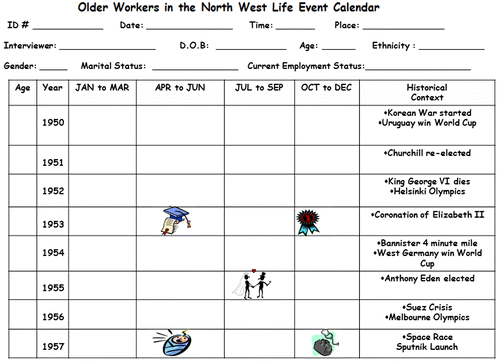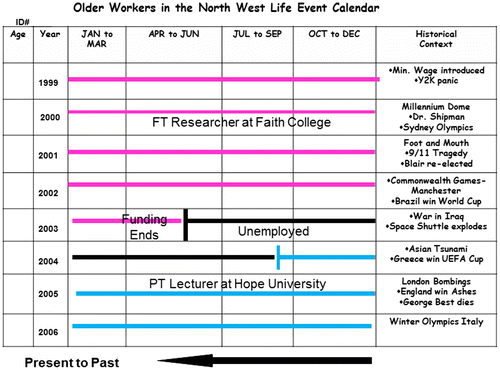Figures & data
Table 1. Characteristics of interviewees.
Figure 4. State distribution plot of employment status by age.
Notes: 17.98%, of employment states within the sample were recorded as professional/managerial, 39.67% as skilled, 17.00% as semi-skilled, 9.30% as unskilled, 6.67% as in education/training, 5.88%, as not in paid work and 3.50% as a family carer.




